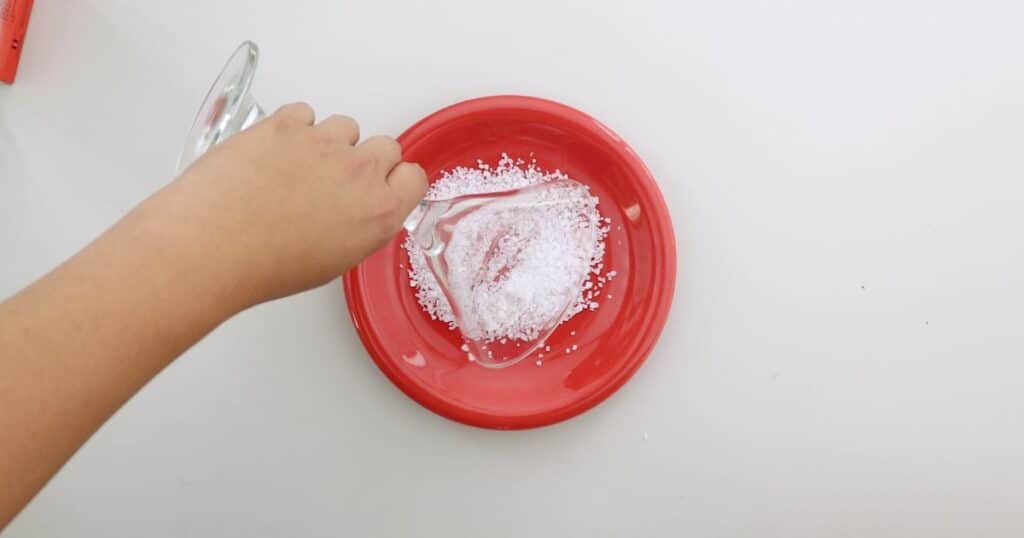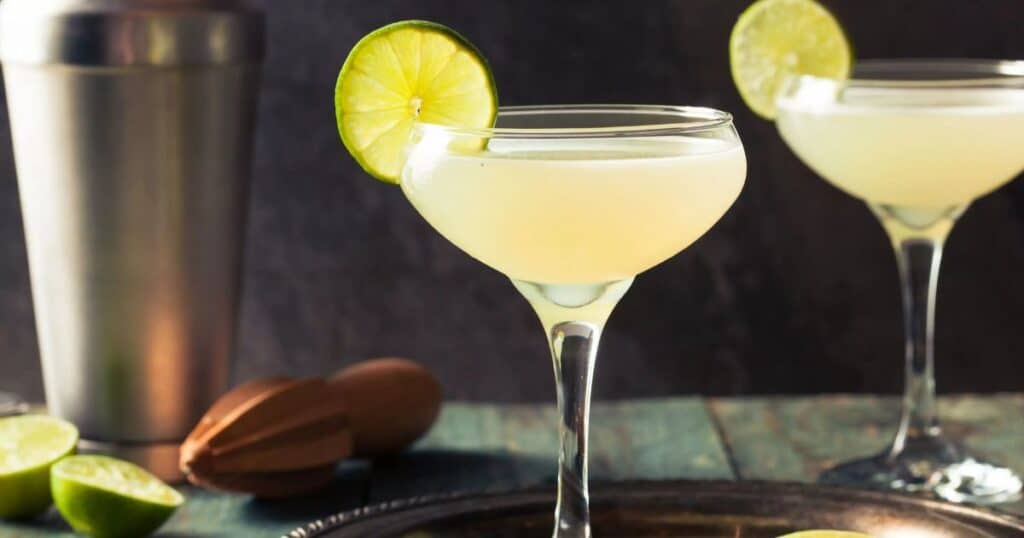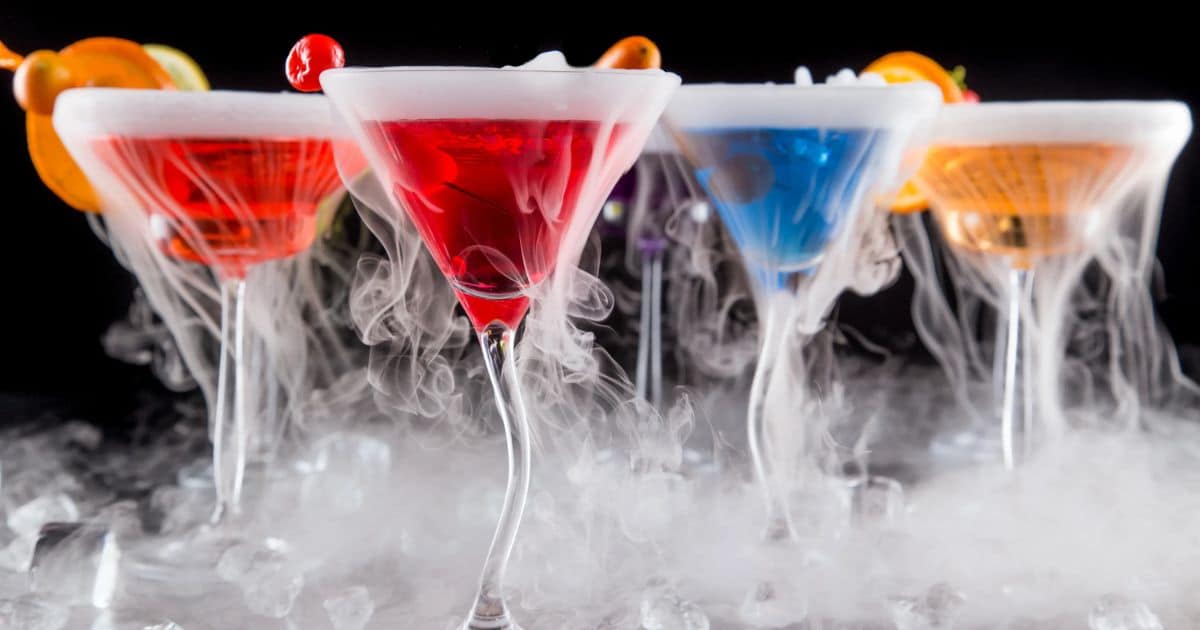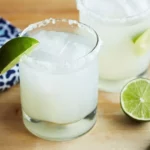Daiquiri and Margarita are classic cocktails known for their refreshing flavors and widespread popularity. A Daiquiri typically consists of rum, lime juice, and simple syrup, creating a well-balanced and zesty concoction. In contrast, a Margarita features tequila, lime juice, and triple sec, delivering a tangy and citrusy kick. Both drinks are iconic in their own right, gracing the menus of countless bars and restaurants.
What’s the difference between a Daiquiri and a Margarita? It’s a question that often lingers in the minds of cocktail enthusiasts and casual drinkers alike. Exploring the nuances between these two beloved beverages reveals a fascinating journey into the world of mixology. Each sip tells a distinct story, and understanding the subtleties can elevate your appreciation for these timeless libations.
Daiquiris and Margaritas share a common foundation in their use of citrus and spirits, but their unique twists set them apart. The Daiquiri, born in Cuba, reflects a tropical charm with its rum base. Meanwhile, the Margarita, originating in Mexico, boasts the boldness of tequila, creating a drink that’s become synonymous with fiestas and good times. Whether you’re drawn to the Caribbean allure of a Daiquiri or the spicy vibrancy of a Margarita, both cocktails promise a delightful journey for your taste buds.
Origins and History

The origins and history of the Daiquiri and Margarita trace back to distinct corners of the globe, each with its own captivating narrative. The Daiquiri, originating in Cuba, finds its roots in the early 20th century. Named after a beach near Santiago de Cuba, this cocktail gained popularity as a simple yet refreshing mix of rum, lime juice, and sugar. It became a favorite among both locals and expatriates, eventually spreading its influence worldwide. On the other hand, the Margarita, with its Mexican heritage, emerged later in the 1930s or 1940s, and its exact origins remain shrouded in mystery.
Some tales attribute its creation to socialite Margarita Sames, while others suggest it evolved from pre-existing tequila-based drinks. Regardless of the uncertainties, Margarita’s journey from a humble creation to an internationally celebrated cocktail mirrors the lively spirit of its cultural origins. Agave for Margaritas has been a key element in the evolution of this iconic drink. Exploring the origins and history of these libations unveils not just the evolution of the two drinks but also the cultural tapestry that shaped their identities.
Tracing the Roots of the Daiquiri and Margarita
Tracing the roots of the Daiquiri and Margarita unveils rich histories entrenched in diverse cultural landscapes. The Daiquiri, born on the shores of Cuba in the early 20th century, reflects the Caribbean’s tropical allure with its blend of rum, lime juice, and sugar. Meanwhile, the Margarita shrouded in mystery, emerged later in Mexico, featuring tequila, lime juice, and triple sec. Exploring their origins not only reveals the evolution of these cocktails but also showcases the influence of geography and tradition in shaping their distinctive characters.
Base Ingredients
At the heart of the distinction between a Daiquiri and a Margarita lies the crucial element of base ingredients. This core component shapes the identity of each cocktail, dictating its flavor profile and setting the stage for a unique drinking experience. A Daiquiri relies on the harmonious combination of white rum, freshly squeezed lime juice, and a touch of simple syrup.
This blend creates a crisp and citrusy foundation that embodies the laid-back charm of its Cuban origins. On the other hand, a Margarita showcases the dynamic duo of tequila and lime juice, enhanced by the orange-flavored sweetness of triple sec. The tequila’s bold character adds a spirited kick, making the Margarita a vibrant and celebratory choice. As we explore the base ingredients, we unravel the essential building blocks that contribute to the distinctiveness of each cocktail, inviting enthusiasts to savor the nuances of flavor in every sip.
The Core Components: Comparing the Key Elements of Daiquiris and Margaritas
In the realm of mixology, the distinction between Daiquiris and Margaritas lies in their core components. The Daiquiri harmonizes white rum’s lightness with zesty lime juice and a hint of simple syrup, creating a refreshing elixir. In contrast, the Margarita boasts the dynamic interplay of tequila’s boldness, lime’s citrusy tang, and the sweet allure of triple sec. Each sip becomes a symphony of flavors, showcasing how these key elements define and differentiate these iconic cocktails in the world of libations.
Flavor Profiles
Flavor profiles, the intricate tapestry of tastes that define a culinary or beverage experience, serve as a captivating exploration of the senses. They encompass a wide spectrum, ranging from the sweet and savory to the bitter and umami. A well-crafted flavor profile tells a story, revealing the carefully selected ingredients and the skillful balance of textures and tastes.
In the world of gastronomy, understanding flavor profiles is akin to mastering an art form, where chefs and mixologists harmonize diverse elements to create a symphony on the palate. Whether it’s the nuanced complexities of fine wine, the layered notes of a gourmet dish, or the refreshing zest of a cocktail, the appreciation of flavor profiles adds depth and richness to the enjoyment of food and beverages, making every culinary experience a delightful and sensory adventure.
Sip by Sip: Understanding the Unique Taste Profiles of Daiquiris vs. Margaritas
Sip by sip, the journey through the unique taste profiles of Daiquiris and Margaritas unveils a world of distinct flavors. The Daiquiri, with its fusion of rum, lime, and sweetness, captures the essence of the tropics in a refreshing melody. In contrast, the Margarita, a tequila-based marvel, delights with its citrusy kick and bold character. Each sip tells a story of craftsmanship, presenting a choice between the Caribbean charm of a Daiquiri and the lively spirit of a Margarita, creating an experience that lingers on the taste buds.
Preparation Techniques

The preparation techniques for Daiquiris and Margaritas contribute significantly to the distinct characteristics of each cocktail. When crafting a Daiquiri, the focus is often on simplicity and freshness. This classic cocktail is traditionally shaken with ice, allowing the ingredients—rum, lime juice, and simple syrup—to meld harmoniously. The shaking process not only chills the drink but also imparts a frothy texture, enhancing the overall drinking experience.
On the other hand, Margaritas often take a different route, with options for both shaken and blended methods. Shaking a Margarita results in a crisp and invigorating sip while blending introduces a smooth and slushy texture. The choice of preparation technique plays a crucial role in shaping the final presentation and mouthfeel of these beloved cocktails, offering enthusiasts the opportunity to tailor their drink to personal preferences.
Shaken or Blended: Distinguishing the Mixing Methods of Daiquiris and Margaritas
The distinction between shaken and blended methods is paramount in crafting Daiquiris and Margaritas. Shaking Daiquiri results in a crisp, well-integrated fusion of rum, lime, and sweetness, creating a lively and invigorating drink.
Margaritas, on the other hand, offer a choice between the vibrancy of a shaken version and the silky smoothness of a blended alternative. This pivotal decision in mixing techniques shapes the texture and flavor, allowing enthusiasts to tailor these classic cocktails to their preferences, whether craving a brisk shake or a velvety blend.
Variations and Twists
Variations and twists in the world of cocktails offer a delightful playground for mixologists and enthusiasts alike, allowing for endless creativity and personalization. When it comes to classic concoctions like the Daiquiri and Margarita, the potential for innovation is vast. Mixologists often experiment with different types of rum, tequila, or fruit infusions to craft unique flavor profiles that tantalize the palate. Variations may include frozen versions, spicy infusions, or inventive garnishes that add an unexpected twist to the familiar.
These creative adaptations not only showcase the versatility of these iconic drinks but also provide a chance for individuals to find a version that perfectly suits their taste preferences. From fruity Daiquiri remixes to Margaritas with a spicy kick, the world of variations and twists ensures that there’s always something new and exciting to discover in the realm of mixology.
Beyond the Basics: Exploring Different Versions and Varieties of Daiquiris and Margaritas
Beyond the basics lies a captivating exploration of Daiquiris and Margaritas, revealing a rich tapestry of diverse versions and inventive varieties. Mixologists push boundaries, introducing unique ingredients, techniques, and flavor combinations.
From fruit-infused twists to exotic garnishes, each iteration offers a distinct sensory experience. Dive into this world of innovation to discover Daiquiris and Margaritas that transcend tradition, enticing enthusiasts with a spectrum of delightful options that redefine the boundaries of these timeless cocktails.
Glassware and Presentation
Glassware and presentation play a pivotal role in enhancing the overall drinking experience of cocktails. The choice of glass not only adds an aesthetic touch but also influences the aroma and taste perception. When it comes to Daiquiris and Margaritas, the selection of appropriate glassware is crucial. A classic Daiquiri is often served in a stemmed glass, such as a coupe or a martini glass, highlighting its elegance. On the other hand, Margaritas are typically presented in a distinctively shaped glass known as a margarita glass, with its wide, shallow bowl and a salted rim adding a visual and textural dimension to the experience.
The attention to detail in glass selection contributes to the overall enjoyment of these cocktails, creating a feast for the eyes even before the first sip. Whether you prefer the refined allure of a Daiquiri in a sophisticated coupe or the festive flair of a Margarita in its iconic glass, the presentation elevates the drinking ritual, making it a multisensory delight.
Aesthetics Matter: Contrasting the Preferred Glassware and Garnishes for Daiquiris and Margaritas
Aesthetics matter when it comes to Daiquiris and Margaritas, with the choice of glassware and garnishes creating distinct visual identities. Daiquiris often grace elegant stemmed glasses, emphasizing sophistication. In contrast, Margaritas showcase their vibrant personality in margarita glasses, complete with salted rims for a textural twist. The contrasting presentation styles not only contribute to the overall appeal but also set the stage for the unique flavor experiences these iconic cocktails deliver, making each sip a feast for the senses.
Popular Culture and Associations
In popular culture, the Daiquiri and Margarita have cemented their status as more than just drinks; they are cultural symbols that transcend the boundaries of the cocktail world. These beverages have become synonymous with various social settings, from beachside parties to upscale lounges. In films, television shows, and music, characters often find themselves sipping on a Daiquiri or Margarita, creating iconic scenes that contribute to the drinks’ enduring popularity.
The laid-back charm of a Daiquiri is often associated with leisure and relaxation, making it a go-to choice in tropical getaways and summer escapades. On the other hand, the Margarita’s lively and festive reputation aligns it with celebrations and lively gatherings, making it a staple at parties and fiestas. These cocktails have woven themselves into the fabric of socializing, embodying a sense of enjoyment and camaraderie that extends beyond the glass.
Daiquiris and Margaritas in Film, Music, and Pop Culture: Examining the Drinks’ Iconic Status

Daiquiris and Margaritas have become cultural touchstones, gracing screens and soundtracks, amplifying their iconic status. From classic films to contemporary hits, these cocktails make memorable cameos, symbolizing leisure, celebration, and stylish socializing.
Their presence in popular culture transcends their ingredients, embodying a lifestyle associated with relaxation, fun, and vibrant gatherings. Daiquiris and Margaritas aren’t just drinks; they are symbols of enjoyment, synonymous with cinematic scenes and musical beats that capture the essence of carefree moments and lively festivities.
FAQ’s
What alcohol is in a Daiquiri?
Rum is the primary alcohol in a classic Daiquiri.
Is a strawberry margarita the same as a strawberry Daiquiri?
No, they are different. A strawberry Margarita contains tequila, while a strawberry Daiquiri is made with rum.
Why is it called a Daiquiri?
The Daiquiri is named after a beach near Santiago de Cuba, where the drink is believed to have originated in the early 20th century.
Conclusion
In conclusion, exploring the difference between a Daiquiri and a Margarita unveils a rich tapestry of flavors, origins, and cultural significance. These two iconic cocktails, each with its distinct personality, have carved a lasting place in the world of mixology and social enjoyment. The Daiquiri’s tropical allure, rooted in Cuba, provides a refreshing escape with its harmonious blend of rum, lime, and sweetness. On the other hand, the Margarita, born in Mexico, offers a spirited kick, showcasing the vibrant combination of tequila, lime, and triple sec.
Beyond the ingredients, these drinks hold a cultural sway, influencing scenes in films, resonating in musical compositions, and embodying the essence of various social settings. Whether you lean towards the laid-back elegance of a Daiquiri or the festive vibrancy of a Margarita, both cocktails stand as timeless symbols of conviviality, inviting enthusiasts to savor the nuanced pleasures of each sip. The nuanced distinctions between these libations contribute to the diverse and dynamic landscape of cocktail culture, ensuring that the debate over Daiquiri versus Margarita remains a spirited and enjoyable conversation.





